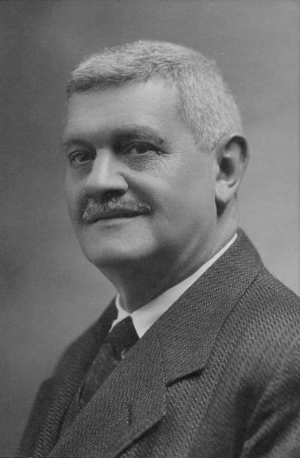Jaime Carner facts for kids
Quick facts for kids
Jaime Carner Romeu
|
|
|---|---|

Sketch of Carner by Ramon Casas
|
|
| Cortes Deputy for Vendrell | |
| In office 1907–1916 |
|
| Cortes Deputy for Tarragona | |
| In office 1931–1933 |
|
| Minister of Finance | |
| In office 16 December 1931 – 12 June 1933 |
|
| Preceded by | Indalecio Prieto |
| Succeeded by | Agustín Viñuales Pardo |
| Personal details | |
| Born | 22 February 1867 El Vendrell, Tarragona, Catalonia, Spain |
| Died | 26 September 1934 (aged 67) Barcelona, Catalonia, Spain |
| Occupation | Lawyer, businessman, politician |
Jaime Carner Romeu (born February 22, 1867 – died September 26, 1934) was an important Spanish lawyer, businessman, and politician from Catalonia. He served as a representative in the Cortes, which is like the Spanish parliament. He was a member of parliament before World War I. Later, he worked as a lawyer for big companies. When the Second Spanish Republic began, he was elected to parliament again. From 1931 to 1933, he held a very important job as the Minister of Finance.
Contents
Early Life and Education (1867–1899)
Jaime Carner Romeu was born in El Vendrell, a town in Tarragona, Catalonia, Spain. His birthday was February 22, 1867. His father, Joan Carner, was a veterinarian, and his mother was Josefa Romeu.
Jaime went to school in Barcelona for his secondary education. This was between 1876 and 1882. After that, he studied law at the University of Barcelona from 1882 to 1883 and again from 1885 to 1886. He then started his career as a lawyer. He worked in the office of Francesc de Paula Rius i Taulet, who was the mayor of Barcelona at the time.
Political Career During the Bourbon Restoration (1899–1916)
Carner became involved in the Catalan movement, which aimed to gain more self-rule for Catalonia. In 1899, he helped form the Catalan National Center. He became the vice-president of this group.
In 1901, the Catalan National Center joined with another group to form the Regionalist League of Catalonia. Carner was a key leader of the more republican (meaning they supported a republic, not a king) part of this new party. He helped organize an important election in 1901.
In 1903, Carner became a representative on the city council of Barcelona. In 1904, when King Alfonso XIII visited Barcelona, Carner was one of the councilors who chose not to attend the welcome ceremony. This group then left the Regionalist League.
In 1904, Carner helped start a weekly newspaper called El Poble Català. It became a daily newspaper in 1906. He also helped create the Republican Nationalist Centre party in 1904. By late 1906, he was elected president of this party.
His party joined a group called Solidaritat Catalana. This group won many seats in the 1907 elections in Catalonia. Carner was elected as a representative for the area of El Vendrell. In 1910, Carner helped form a new party called the Republican Nationalist Federal Union. This party joined with other groups but lost badly in the 1914 elections.
Life as a Lawyer and Businessman (1916–1931)
After 1916, Jaime Carner took a break from politics. He focused on his work as a lawyer, which was very successful. He joined the boards of directors for several large industrial companies. This means he helped make important decisions for these businesses.
He was one of the people who started the Compañía de Industrias Agrícolas. He also worked as a lawyer for powerful companies and banks in Barcelona. He even served on the board of Nestlé Spain. Carner became very wealthy and was highly respected as a legal expert. Political leaders often asked him for advice on legal matters.
Role in the Second Spanish Republic (1931–1934)
When the Second Spanish Republic was declared in 1931, Carner returned to politics. He was elected as a representative to the Cortes for the Republican Left of Catalonia party.
The government of Catalonia, called the Generalitat of Catalonia, was brought back by law in April 1931. Carner was put in charge of a group that prepared a plan for Catalonia to have more self-rule. This plan was called the Statute of Núria. It was approved by a public vote in August 1931 and by the Cortes in September 1932.
After the new republican constitution was put in place, Manuel Azaña changed the government. He appointed Carner as the Minister of Finance on December 16, 1931. As Minister of Finance, Carner often spoke in discussions about the Bank of Spain.
Carner's main goal as Minister of Finance was to make the Spanish currency, the peseta, stable. This would help Spain get loans from other countries. His policies were careful and aimed to control prices. He limited imports, reduced the number of government workers, and tried to balance the government's budget.
The value of the peseta had dropped a lot between 1929 and 1931. But under Carner, it became much more stable. The government's budget deficits (when the government spends more than it earns) were smaller in 1932 and 1933. He suggested reducing military spending and increasing money for education. He also changed income tax laws. He wanted to make the Spanish economy more competitive by changing taxes and tariffs (taxes on imported goods).
Carner left his job on June 12, 1933, because he was diagnosed with advanced throat cancer. Agustín Viñuales Pardo, another politician from Catalonia, took over his position. Jaime Carner died on September 26, 1934. His funeral in Barcelona was attended by many important political leaders.
See also
 In Spanish: Jaime Carner para niños
In Spanish: Jaime Carner para niños

